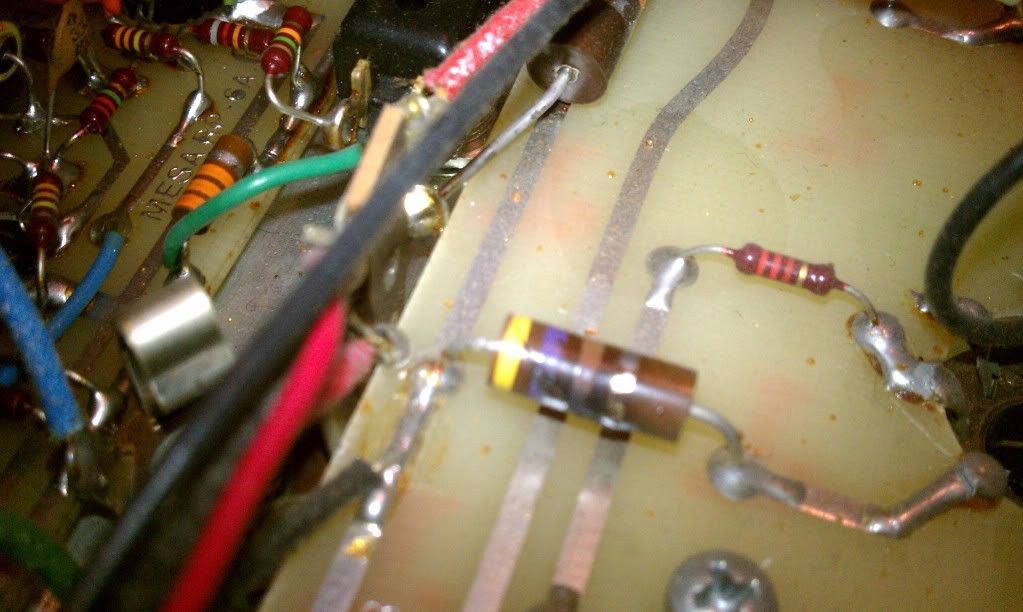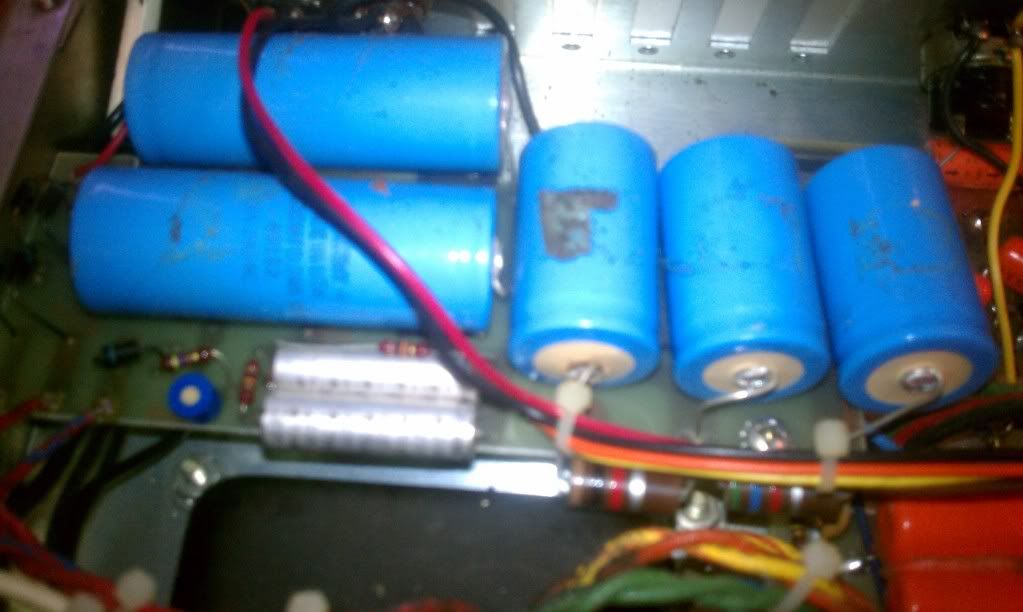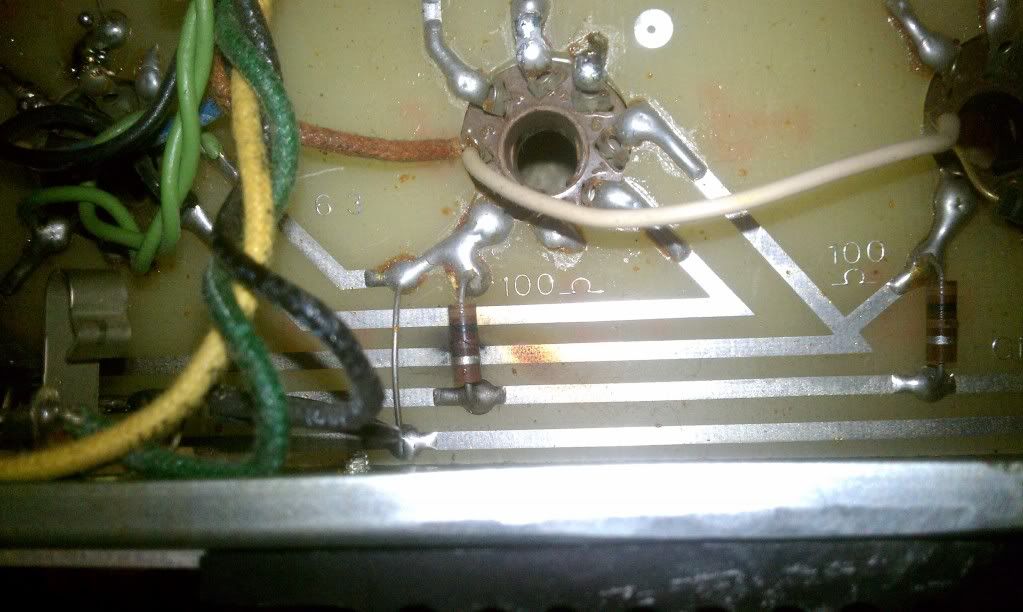I have a Boogie Mkiia which is i got back recently after it was with my sister in law for 15 years or so (stored in the garage i think). Whenever i try and turn on the lead channel (with foot switch or from panel) the relay starts going crazy and the sound gets really bad. I noticed that there are several broken solder joints and a resistor on tube socket is cracked (see picture) 
I have 4 groove tube power reducers with GTEL84S's in the amp (it does the same with the old tubes.)
Could this be the cause of the problem or is it just an unrelated problem?
Thanks

I have 4 groove tube power reducers with GTEL84S's in the amp (it does the same with the old tubes.)
Could this be the cause of the problem or is it just an unrelated problem?
Thanks



Comment